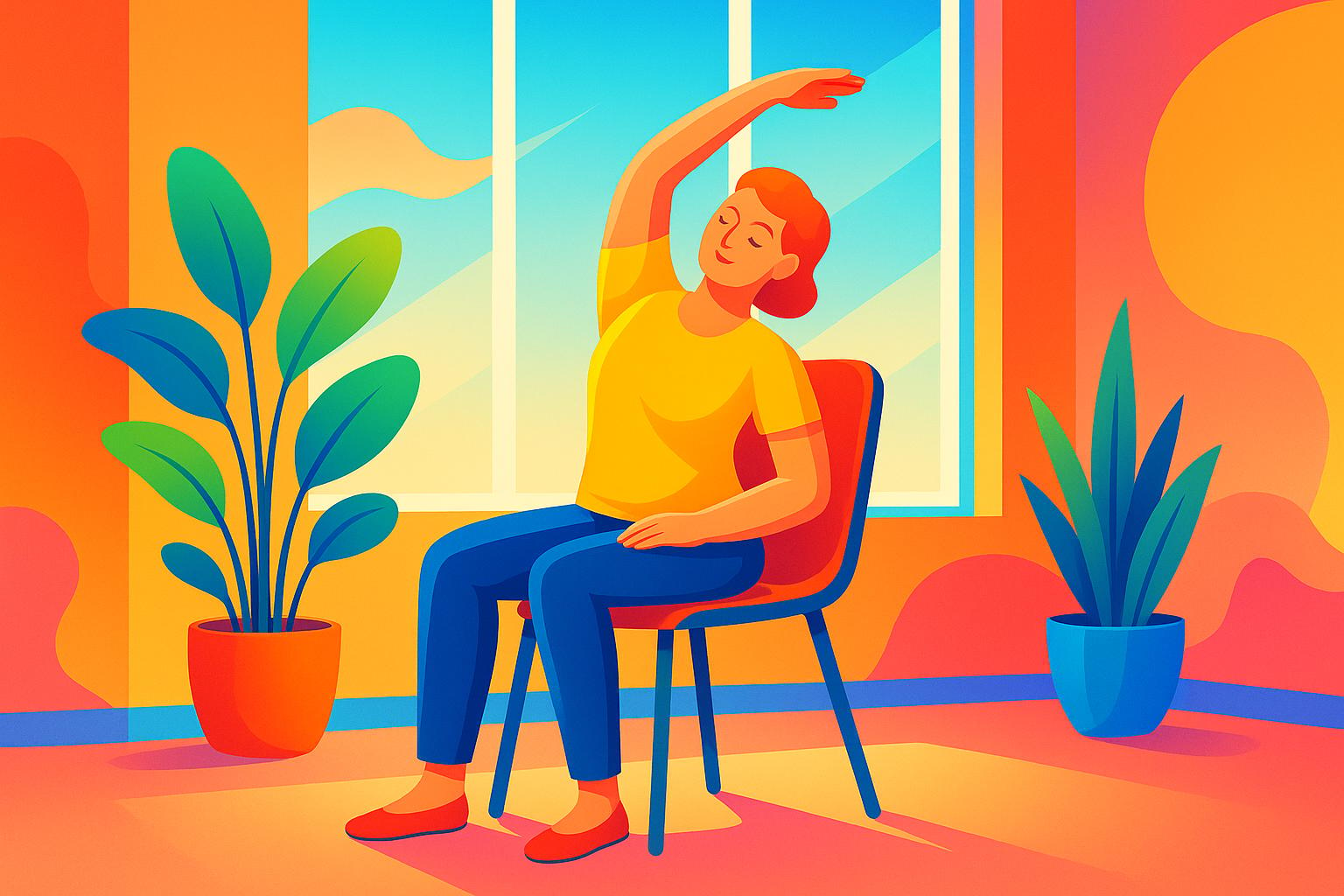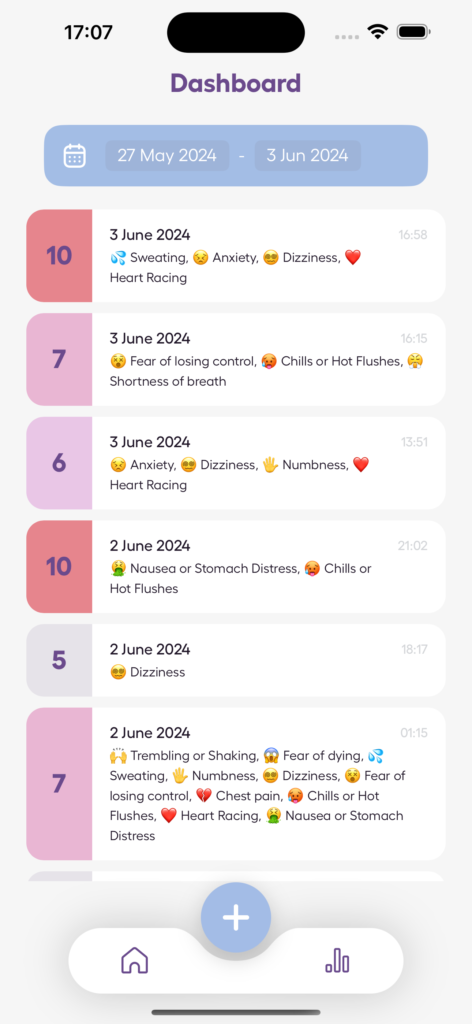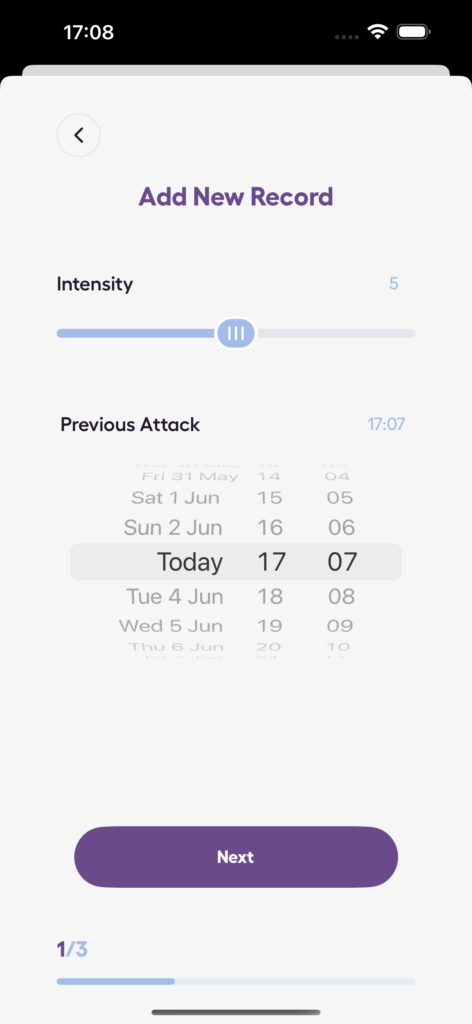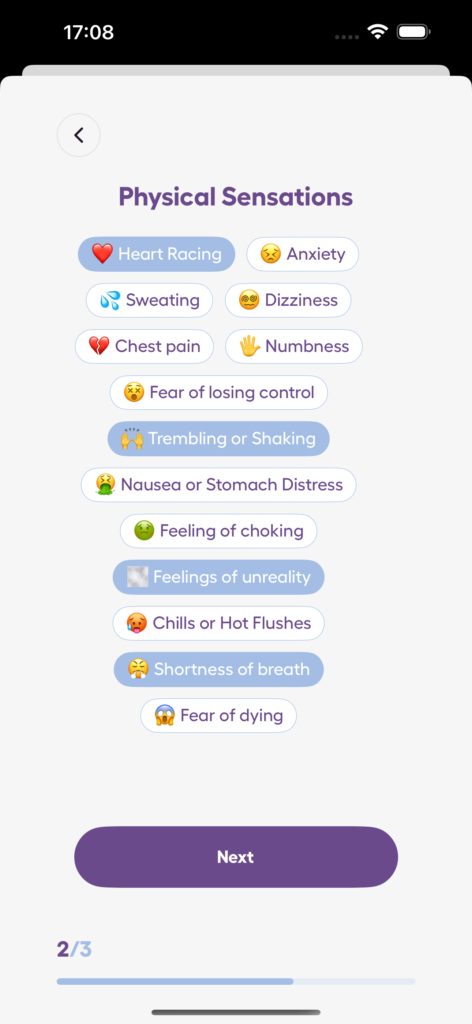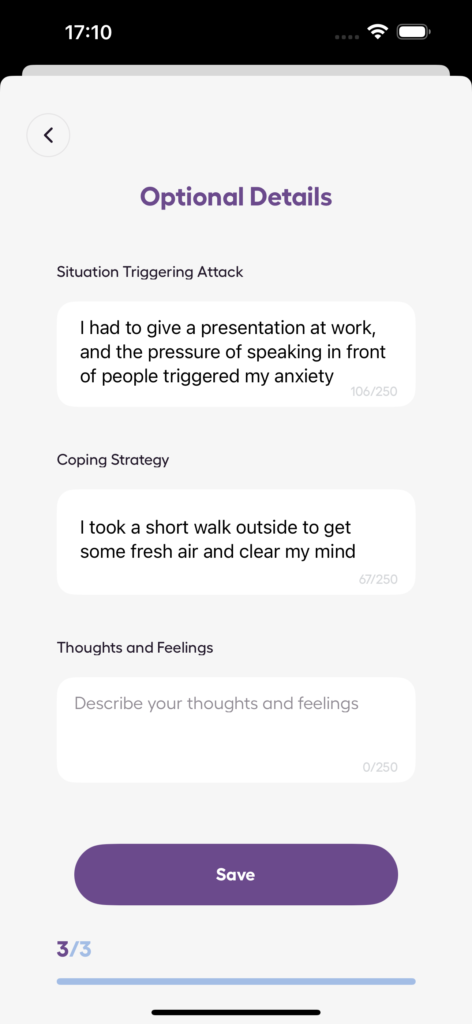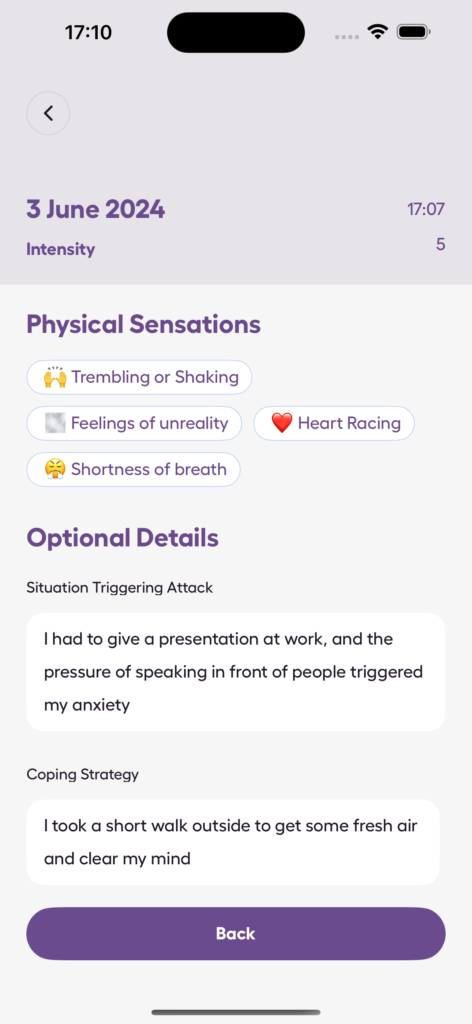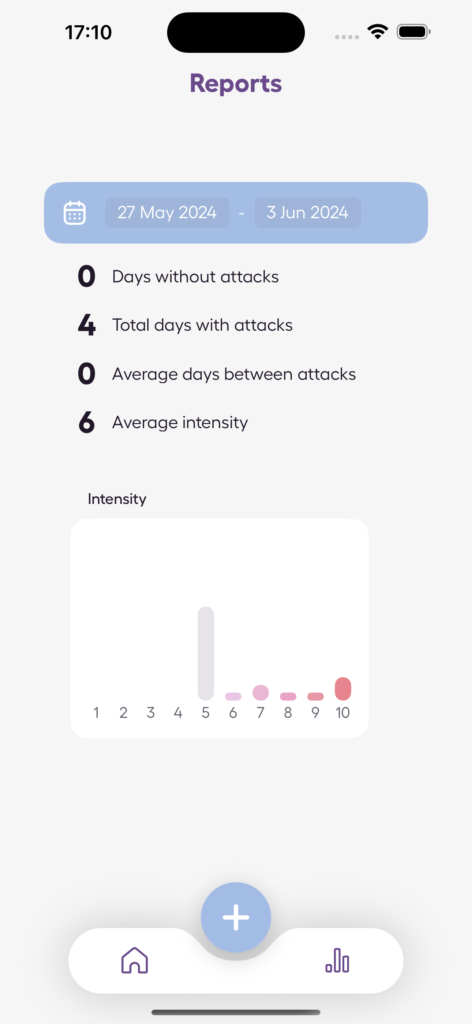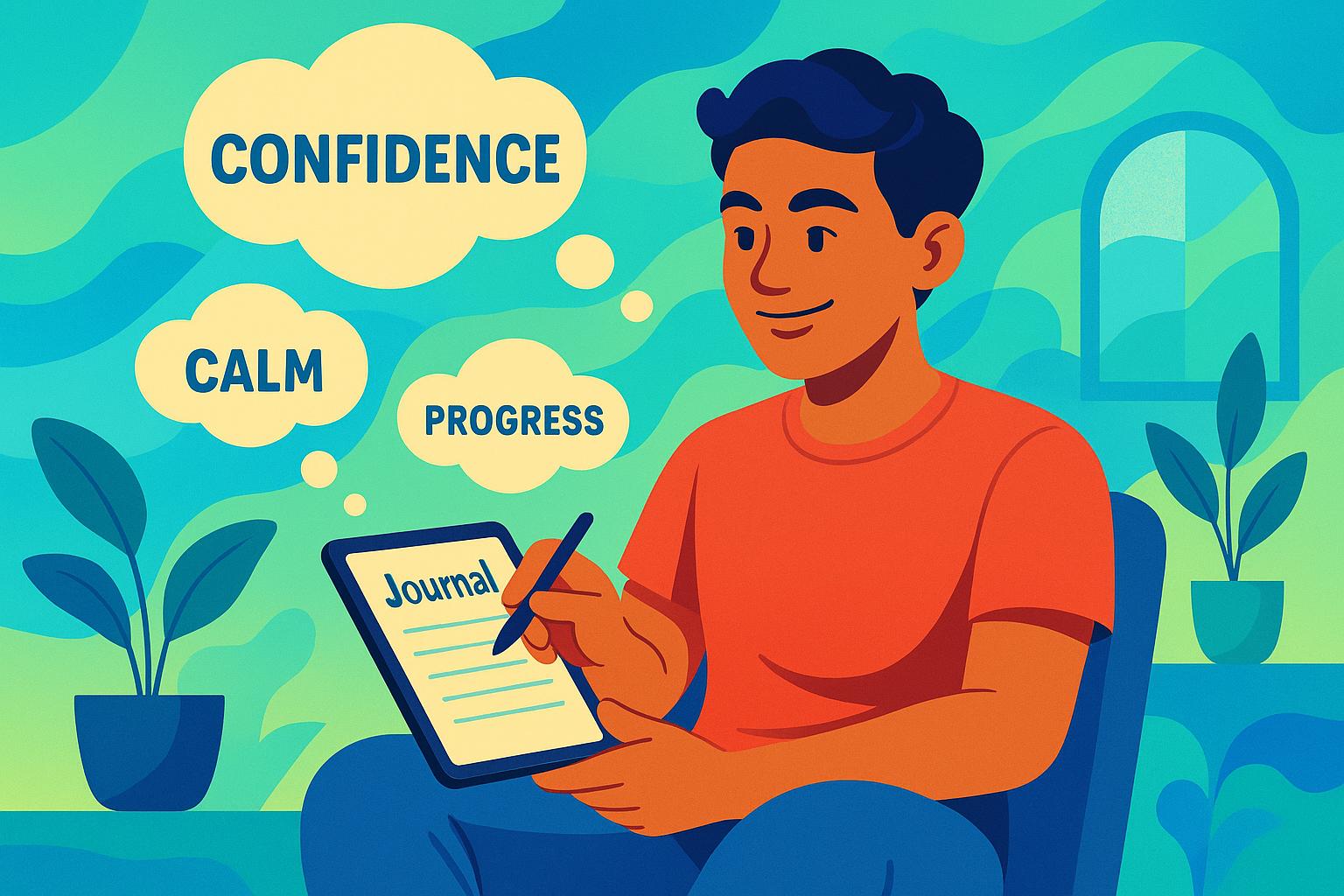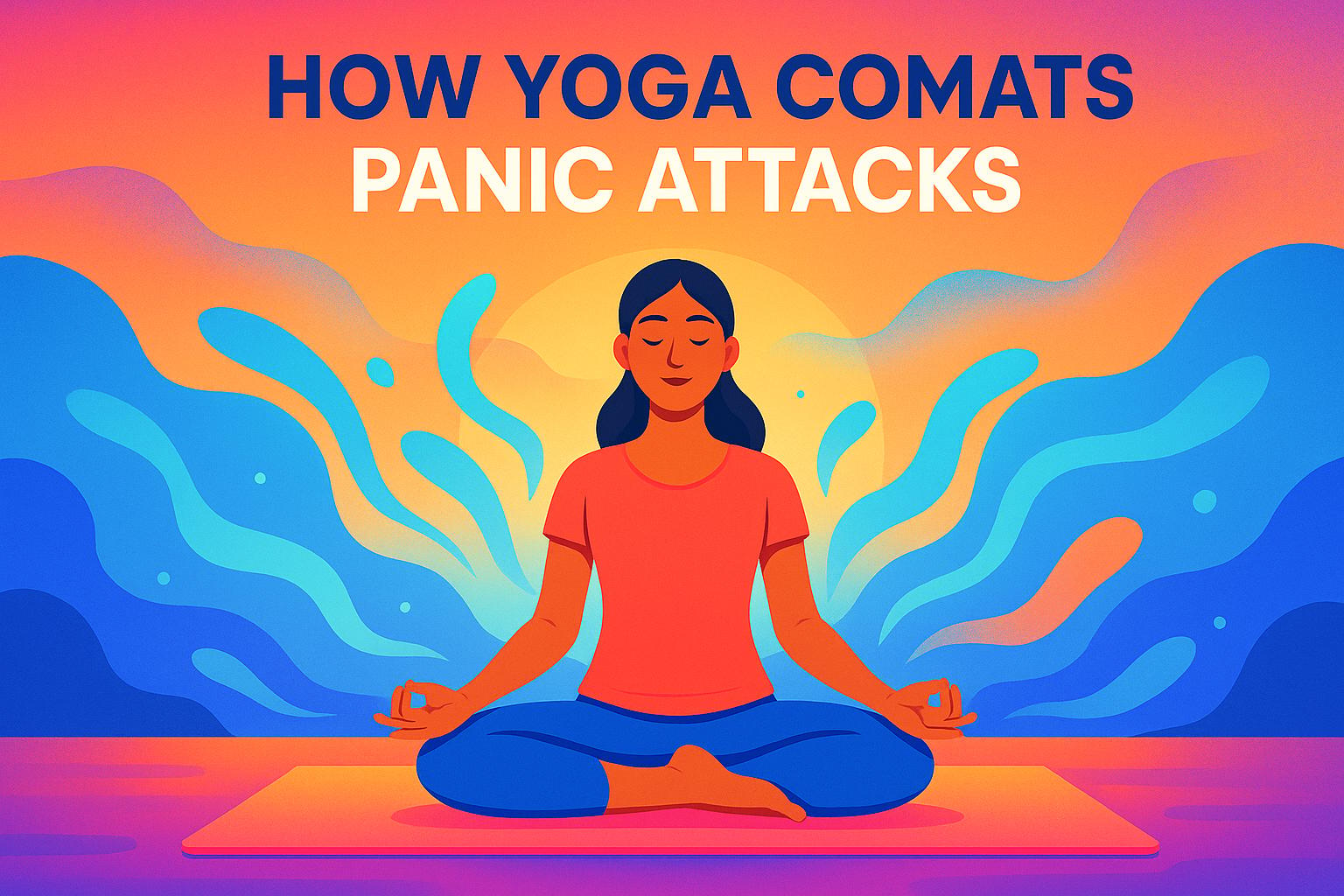Chair yoga is a simple way to manage stress and anxiety without needing special equipment or a lot of time. By using a chair for support, this practice combines gentle stretches, breathing exercises, and mindfulness techniques to help you relax and feel more balanced. It’s suitable for everyone, including beginners, seniors, and people with limited mobility.
Here’s what you’ll learn:
- Key poses: Seated Mountain Pose, Chair Cat-Cow Stretch, Seated Forward Fold, Seated Spinal Twist, and Seated Side Stretch.
- Breathwork techniques: Equal breathing (sama vritti) and body scanning to calm your mind.
- Daily routine tips: How to fit chair yoga into your morning, midday, or evening schedule.
- Benefits: Improved flexibility, reduced anxiety, and better focus – all in just a few minutes.
Chair yoga is easy to start, safe for most people, and effective for managing stress in everyday life.
Calming Chair Yoga for Anxiety and Stress Relief | 17 Minutes
Best Chair Yoga Poses for Anxiety Relief
These five poses are designed to ease tension and bring a sense of calm. Each one focuses on specific areas of stress while encouraging relaxation through gentle movement and intentional breathing. Studies suggest that practicing yoga – even in an office chair – can significantly improve both physical and mental stress markers. Here are five simple poses you can try for instant relief.
Seated Mountain Pose
This pose helps you feel grounded when anxiety starts to creep in. Sit tall in your chair with your feet flat on the floor, about hip-width apart. Rest your hands lightly on your thighs and imagine a string pulling you upward from the crown of your head. Keep your core engaged while allowing your shoulders to relax.
Breathe steadily and evenly as you hold this pose for 30 seconds to 2 minutes. It not only improves posture but also enhances focus and creates a sense of stability. If your thoughts feel scattered, this pose can help bring you back to the present moment. Plus, the upright position naturally encourages deeper breathing, activating your body’s relaxation mode.
Chair Cat-Cow Stretch
Perfect for relieving tension in your back and neck, this gentle stretch is a go-to for stressful moments. Start by sitting with your feet flat on the ground and your hands resting on your knees. As you inhale, arch your back and lift your chest. On the exhale, round your spine and tuck your chin. Repeat this movement for 5–8 breath cycles, syncing each motion with your breathing.
This stretch not only eases muscle tension but also promotes mindful breathing, which helps calm your nervous system. Many people who sit at desks all day find that adding this stretch to their routine improves their mood and reduces physical discomfort.
Seated Forward Fold
When your mind is racing, this pose can help quiet your thoughts while giving your back a gentle stretch. Sit with your feet hip-width apart. Inhale to lengthen your spine, and as you exhale, hinge forward from your hips. Let your arms and head hang toward the floor, but avoid rounding your back. Only fold as far as feels comfortable.
Stay in this position for 30 seconds to 1 minute, taking deep breaths and letting go of tension with each exhale. This simple movement encourages relaxation, both physically and mentally, helping to ease a busy mind.
Seated Spinal Twist
This twisting pose is great for releasing tension in your spine and improving mental clarity. Sit up straight with your feet flat on the floor. Inhale to lengthen your spine, then exhale as you gently twist your torso to one side. Place one hand on your knee and the other on the back of the chair for support. Keep your hips facing forward.
Hold the twist for 3–5 deep breaths, then return to center and repeat on the other side. This movement not only helps relieve tightness but also improves circulation, which can quickly reset your stress response. It’s a great way to refocus your mind and find a sense of calm.
Seated Side Stretch
This pose targets the muscles along your sides and encourages fuller, deeper breaths. Sit tall with your feet flat on the floor. Inhale as you lift one arm overhead, then exhale as you lean gently to the opposite side. Feel a stretch from your hip to your fingertips, keeping both sitting bones firmly grounded.
Hold the stretch for 3–5 breaths before returning to center. Repeat on the other side. This pose helps release tightness in the torso and ribcage, promoting better breathing and easing both physical and mental tension.
Adding Breathwork and Mindfulness to Chair Yoga
Combining chair yoga with intentional breathwork and mindfulness can significantly enhance its ability to ease anxiety. These practices work together to address physical tension and mental stress, offering a holistic approach to relaxation. Studies have found that they help reduce stress, sharpen focus, and improve sleep quality. Considering that 66% of American workers report stress-related sleep disruptions, these techniques are worth exploring. Below, we’ll dive into specific breathwork and mindfulness methods to seamlessly incorporate into your chair yoga routine.
Equal Breathing for Calm
Equal breathing, or sama vritti, is a simple yet powerful technique to include in your chair yoga practice. It involves matching the length of your inhales and exhales to tap into your body’s natural relaxation mechanisms.
To begin, sit comfortably in Seated Mountain Pose with your gaze softened or eyes closed. Start by breathing naturally, then gradually adjust so your inhales and exhales are the same length. For example, inhale for a count of four and exhale for the same count. Over time, you can extend this to six or eight counts as it feels comfortable.
This slow, measured breathing activates the parasympathetic nervous system, helping to lower your heart rate and blood pressure. You can practice equal breathing while holding any chair yoga pose or on its own whenever anxiety starts to creep in.
Remember, consistency is more important than perfection. If your breathing becomes uneven or you lose count, simply return to your natural rhythm and try again. A patient, forgiving approach makes learning this technique more enjoyable and effective.
Body Scanning While Seated
Body scan meditation pairs beautifully with chair yoga because you’re already in a supported, relaxed position. This mindfulness technique involves mentally scanning your body from head to toe, observing sensations without judgment. It’s a great way to build awareness and release tension.
Sit with your feet flat on the ground and your hands resting on your thighs. Close your eyes and take a few deep breaths to settle in. Begin at the crown of your head, slowly directing your attention downward. Notice sensations in your forehead, eyes, jaw, and neck. Simply observe any tension without trying to change it.
Continue scanning through your shoulders, arms, chest, and back, identifying areas where stress may linger. Move down through your abdomen, hips, thighs, calves, and finally your feet. This process typically takes about 5–10 minutes and can leave you feeling more grounded and relaxed.
Quick Meditation Practices
To complement your chair yoga and deepen its calming effects, try incorporating quick meditation exercises. These don’t require extra time or equipment, making them easy to fit into even the busiest routines.
One option is loving-kindness meditation, which helps shift your focus from anxiety to compassion. After completing your chair yoga session, remain seated and think of someone you care about. Silently repeat phrases like, “May you be happy, may you be at peace, may you be free from suffering.” Then, extend those same wishes to yourself.
Another technique is mindful observation. Choose an object nearby – maybe a plant, a photo, or even your hands – and spend a few minutes observing its details. Notice its colors, textures, and shapes. If your mind starts to wander, gently bring your attention back to the object.
For a simpler approach, try mindfulness meditation. Sit comfortably, focus on your breath, and when your mind drifts, gently redirect your attention. This straightforward practice can be done anywhere – at home, in the office, or whenever you need a moment of calm.
The goal isn’t to empty your mind but to create small pockets of focused awareness. Even two or three minutes of mindfulness can help reset your nervous system and ease anxious thoughts. With anxiety disorders increasing globally by an estimated 25.6%, these accessible tools are becoming essential for maintaining daily well-being.
sbb-itb-b1dedcc
Chair Yoga Benefits and Things to Consider
Chair yoga stands out for its accessibility and practicality. While traditional yoga and other relaxation methods have their benefits, chair yoga offers unique advantages that make it an effective option for managing anxiety.
Chair Yoga vs Other Relaxation Methods
Comparing chair yoga to other relaxation techniques can help you decide what works best for your needs. Here’s a quick breakdown:
| Method | Equipment Needed | Accessibility | Time Required | Effectiveness for Anxiety |
|---|---|---|---|---|
| Chair Yoga | Sturdy chair | High – suitable for all mobility levels | 5–30 minutes | Shown to reduce anxiety and depression |
| Traditional Yoga | Yoga mat, floor space | Moderate – requires flexibility | 30–90 minutes | High effectiveness but may feel intimidating for beginners |
| Meditation | None | High | 5–60 minutes | Great for mental stress but offers limited physical benefits |
| Progressive Muscle Relaxation | None | High | 10–30 minutes | Moderate for easing physical tension |
| Deep Breathing | None | High | 2–10 minutes | Good for quick relief |
Chair yoga is particularly useful in settings like workplaces, where many Americans spend nearly 10 hours a day sitting. Unlike traditional yoga, it integrates effortlessly into your daily routine, no matter where you are.
Main Benefits of Chair Yoga
Chair yoga goes beyond just being convenient – its benefits for anxiety management are backed by research. One study revealed that participants practicing chair yoga experienced significant reductions in both anxiety and depression, while control groups saw no improvements.
Ease of access is one of chair yoga’s standout features. It removes many of the obstacles associated with traditional yoga, such as the need for floor mats or flexible poses. Instructor Stacie Dooreck highlights its inclusivity:
"It’s safe for all ages and can be very gentle… It also helps with flexibility, posture – people in offices are usually hunched over at their desks – and combats repetitive stress injuries, like carpal tunnel syndrome."
Time efficiency is another major draw. Even a short, 5-minute session can make a difference. Studies show that just 15 minutes of chair yoga can significantly improve stress levels.
Chair yoga also offers physical benefits. Over a 12-week period, participants improved their agility and balance by over 10%. Older adults practicing weekly for three months reported reduced stress, better moods, and fewer panic attacks.
Ansley Davis, a master trainer at YogaSix, underscores its versatility:
"Chair yoga is great for releasing tension and muscle soreness and for full mobility… It’s also a great rest-day activity. Plus, the more you can vary your movements, the better."
Safety Tips and Practice Guidelines
To get the most out of chair yoga while staying safe, follow these simple guidelines.
Choose the right chair. A sturdy, armless chair with a straight back on a flat surface works best. Avoid chairs with wheels or soft cushions that lack support. Your hips should sit slightly higher than your knees, with your feet flat on the floor. If your feet don’t reach the ground comfortably, avoid putting excessive pressure on your spine.
Physical therapist Matt Minard advises:
"You want to be able to do slow, controlled movements without putting extra stress on your back or hips."
Focus on proper movement. Breathe deeply and move slowly to avoid strain. Start with short sessions and build up gradually. Pay attention to your body – there’s a difference between a healthy stretch and actual pain.
Consider health conditions. If you have osteoporosis, avoid forward bending and extreme twisting of the spine. When bending forward, hinge at the hips and keep your back straight. Those with breathing issues should be cautious of dizziness.
Dr. Nadine Kelly, founder of Yogi MD, emphasizes:
"I think of yoga poses as adaptable to a student’s body and not the other way around."
This flexible approach ensures that chair yoga can meet your individual needs. If you’re unsure, consult a physician before starting.
The high participation rate in studies – over 97% of participants fully engaged in sessions – shows just how approachable and effective chair yoga can be for reducing stress and anxiety.
Making Chair Yoga Part of Your Daily Routine
Chair yoga can effortlessly fit into your day, using even the smallest pockets of time. With the right approach, it can become as natural as brushing your teeth or having your morning coffee.
Creating a Daily Practice Schedule
One of the great things about chair yoga is its flexibility – you can do it almost anywhere, anytime. Here are some ideas for weaving it into your day:
- Morning: Start your day with a few minutes of gentle stretches and deep breathing right after you wake up. It’s a simple way to set a calm, positive tone for the day ahead.
- Midday: Use your lunch break or a quick pause to try poses like the seated spinal twist or chair cat-cow stretch. These moves can help ease stress and release built-up tension.
- After Work: Transition from work mode to personal time with a few soothing stretches, such as forward folds or side stretches. This can help you leave work stress behind and recharge.
- Evening: A gentle session before bed can help activate your body’s relaxation response. Calming poses like the seated mountain pose, paired with deep breathing, are ideal for winding down.
The key is consistency, not how long you practice. Even just a few minutes each day can have a big impact over time. Regular sessions also provide a chance to reflect on your progress and how your body feels.
Using an Anxiety Journal to Track Your Progress
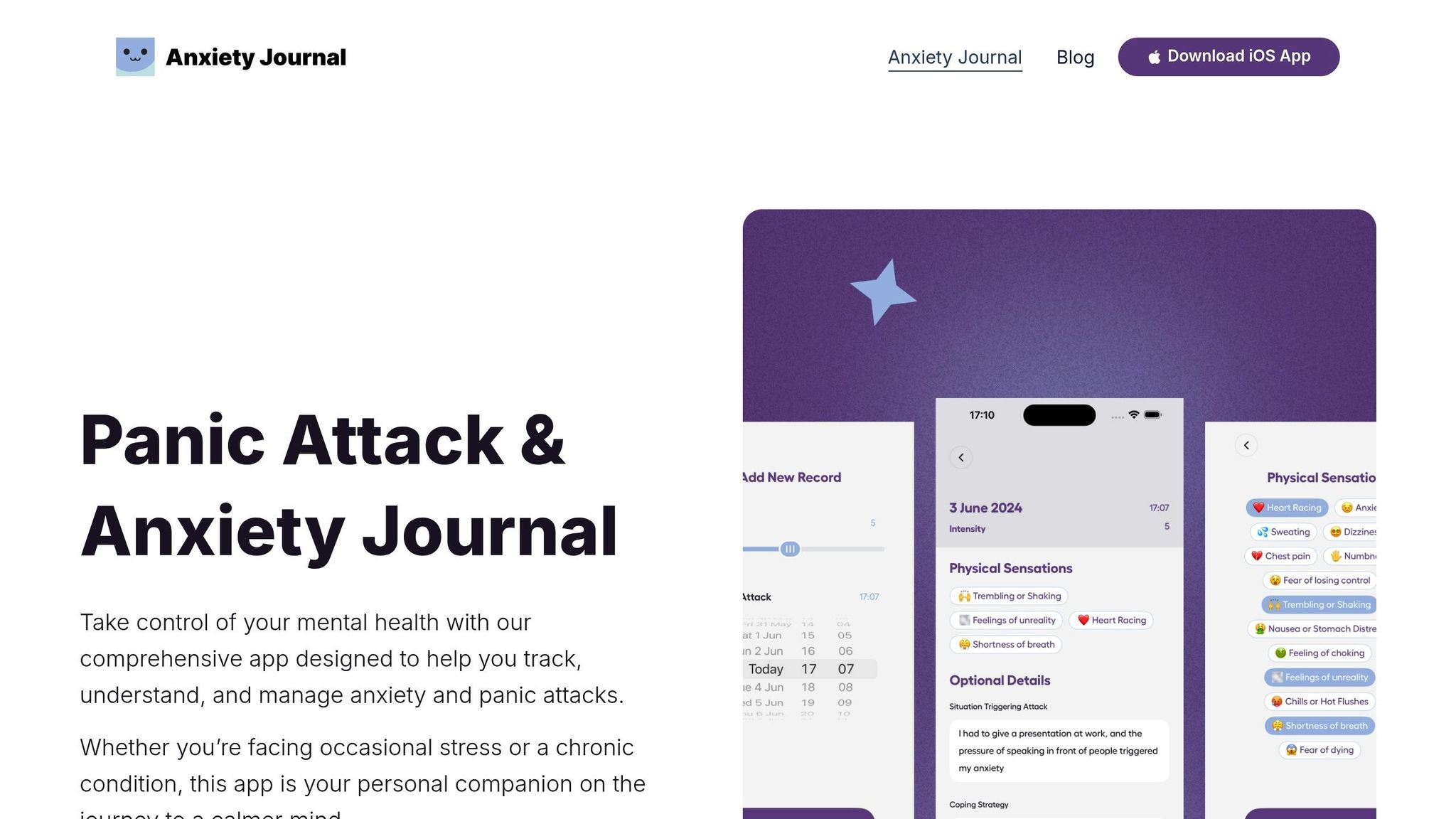
Keeping track of your chair yoga practice can be a game-changer, especially when it comes to managing anxiety. Apps like the Anxiety Journal make it easy to log your sessions and monitor their effects on your stress levels.
Take note of when you practiced, the poses you tried, and how you felt before and after. Over time, patterns may emerge – like noticing higher stress levels on days when you skip yoga. These insights can help you fine-tune your routine and make adjustments based on real data, not guesswork. Plus, tracking your progress reinforces your commitment and integrates chair yoga into your broader self-care plan.
Pairing Chair Yoga with Other Self-Care Methods
Combining chair yoga with other self-care practices can amplify its benefits for both your body and mind. For example:
- Pair yoga with journaling to enhance self-awareness and process emotions.
- Add mindfulness or meditation before or after your session to deepen relaxation.
- Incorporate deep breathing techniques or progressive muscle relaxation (tensing and releasing muscle groups) to boost stress relief.
Experiment with different combinations to find what works best for you. Maybe you’ll enjoy starting your day with yoga and journaling, or perhaps an evening routine with meditation feels more natural. The goal is to create habits that feel sustainable and support your mental well-being over the long term.
Conclusion
Chair yoga offers a practical and effective way to tackle stress and anxiety in our everyday lives. Unlike traditional yoga or other relaxation techniques, it only requires a sturdy chair and a few minutes of your time, making it an accessible option for people with busy schedules or varying physical abilities.
One of the reasons chair yoga works so well is its simplicity. Studies reveal that practicing yoga and meditation, even in workplace settings, can significantly lower perceived stress levels, with benefits that last over time. By engaging the parasympathetic nervous system, chair yoga helps reduce stress hormones like cortisol while encouraging a sense of calm and relaxation for both body and mind.
This practice blends gentle stretches with mindful breathing, creating a powerful combination that eases physical tension and clears mental clutter. Over time, it becomes a tool for consistent progress and self-awareness.
Using tools like the Anxiety Journal app can take your practice to the next level. By tracking stress levels and noting improvements, you can turn chair yoga into a personalized strategy for managing mental health, backed by real data tailored to your needs.
Whether you’re dealing with workplace stress, chronic anxiety, or just need a moment to unwind, chair yoga fits seamlessly into any routine. Its low-impact nature and adaptability make it suitable for virtually any environment or health condition.
FAQs
How can I fit chair yoga into a busy workday without affecting my productivity?
Incorporating chair yoga into your workday is an easy way to stay active without leaving your desk. Simple moves like seated twists, neck stretches, and forward bends can be done right in your chair. These stretches are great for easing tension, improving blood flow, and calming your mind – all without disrupting your tasks.
Taking just 5-10 minutes for chair yoga a few times a day can also sharpen your focus and clear your mind, keeping you productive while supporting your overall health.
What makes chair yoga a better option for people with limited mobility compared to traditional yoga?
Chair yoga provides a fantastic option for those with limited mobility, offering a gentle and safe way to boost flexibility, strength, balance, and posture. Unlike traditional yoga, it modifies poses to be performed while seated, easing pressure on joints and lowering the chance of injury.
Beyond the physical benefits, chair yoga can help ease chronic pain and encourage mental relaxation, making it a helpful practice for managing stress and anxiety. Its inclusive nature allows people of all ages and physical abilities to experience the advantages of yoga without feeling left out.
What safety tips should people with chronic health conditions follow when practicing chair yoga?
If you’re managing a chronic health condition, it’s crucial to check in with your healthcare provider before trying chair yoga. For added safety, choose a sturdy, armless chair placed on a flat, stable surface. Pay attention to your body’s signals – skip any poses that cause discomfort or pain, and respect your limits to avoid strain or injury.
Chair yoga can be tailored to your needs with simple adjustments. Modify poses to match your abilities and keep movements gentle to prevent overexertion. Prioritizing comfort allows you to fully enjoy the calming and stress-relieving benefits of this practice.
